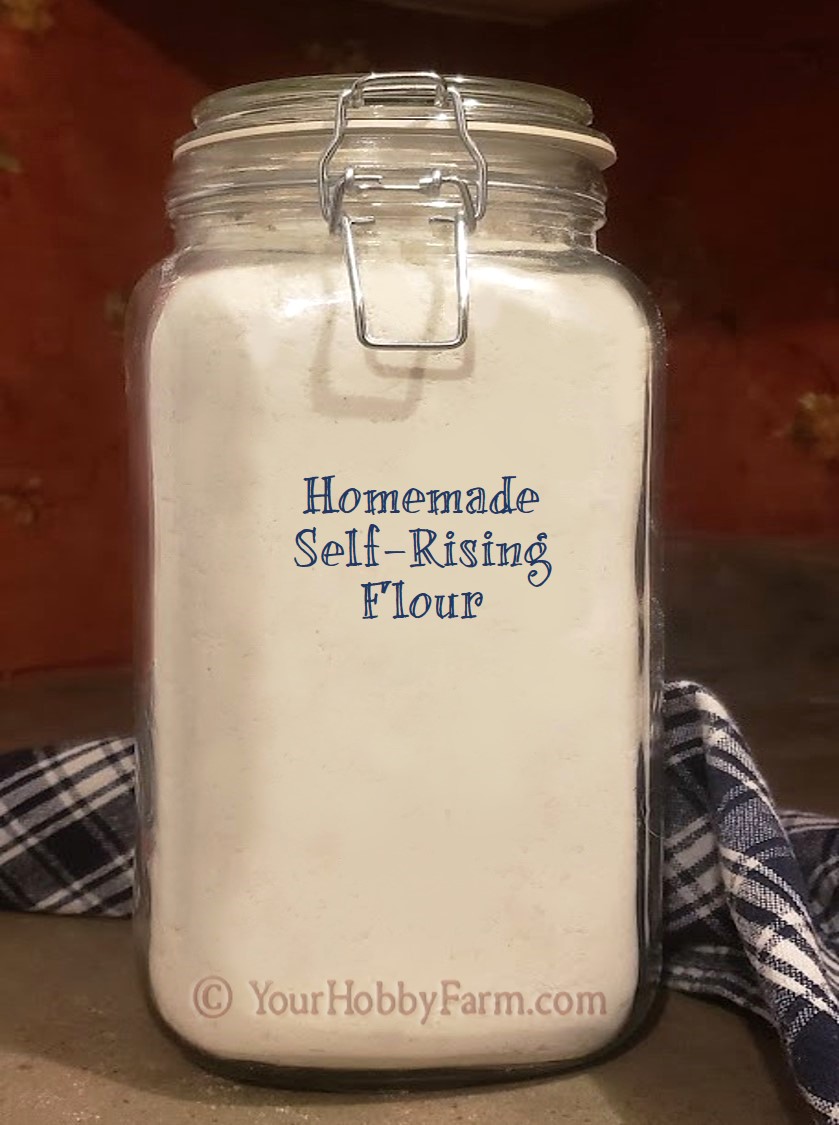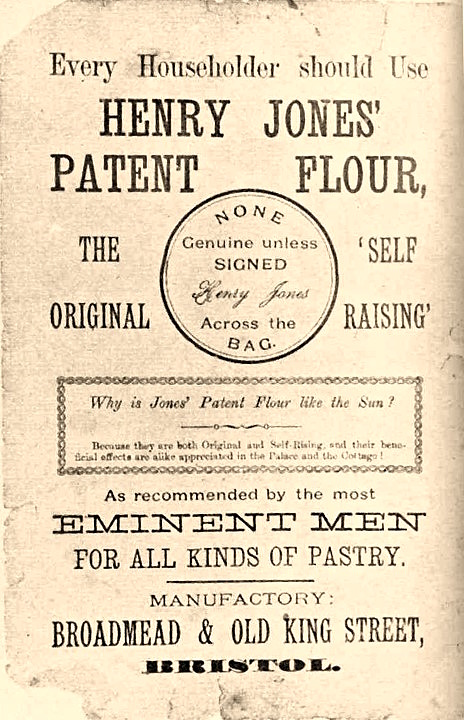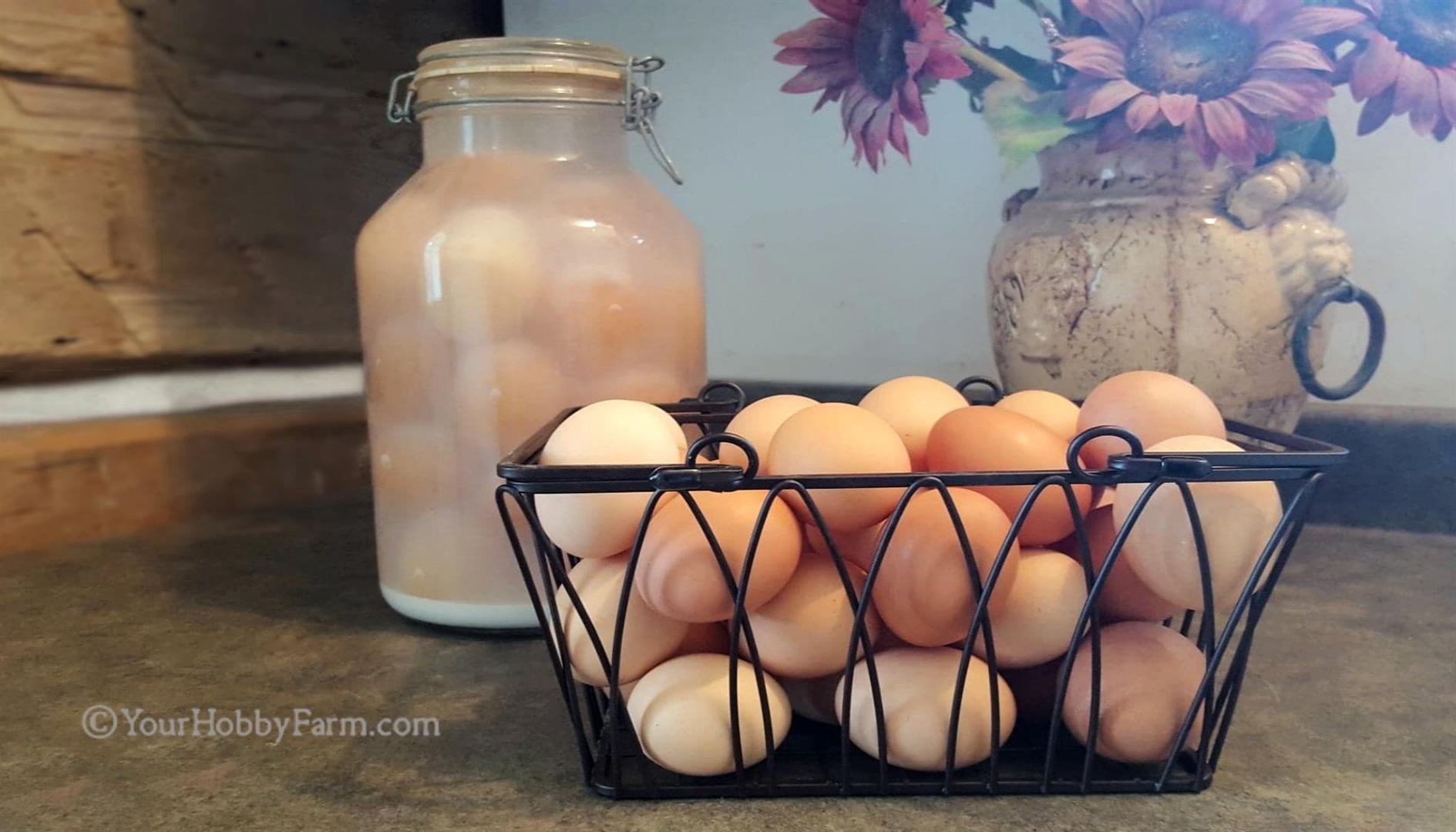Homemade Self Rising Flour
Hey friends and followers! We're changing our website address from YourHobbyFarm.com to HomesteadJoys.com.
With ongoing homestead responsibilities, this transition may take some time. Save our New Logo and QR code for easy navigation! We’d love you to join us in our journey!
 Homestead Joys Logo
Homestead Joys LogoHave you ever come across a quick, easy, yummy sounding recipe calling for self rising flour and were disappointed that you didn't have any on hand? No worries, because you can make your own! It couldn't be any easier to put together, it works great, and you'll save money on your grocery bill. In fact, you probably already have all the ingredients you'll need in your kitchen! Ready? Let's make it together...
 With four very common ingredients that you probably already have in your kitchen or pantry, you can make this time-saving pantry staple and save money while you're at it!
With four very common ingredients that you probably already have in your kitchen or pantry, you can make this time-saving pantry staple and save money while you're at it!YourHobbyFarm.com
But First of All, What Is Self Rising Flour?
And, What's in Self Rising Flour That Makes It Rise?
What is self rising flour? It's a convenient pre-mixed combination of dry ingredients that are typically used in many recipes, in just the right balance of measurements.
If you see a recipe using self rising flour, it's because this specific combination of dry ingredients is what's required for the recipe. This saves time, simplifies the baking, and, if your ingredients are fresh, it ensures that your baked goods will rise beautifully.
However, please be aware that there are specific uses for self rising flour. It's only suitable for a recipe calling for self rising flour. This is because some recipes require a different type of leavening agent, such as yeast, or for a different amount of leavening agent, or none at all. In these cases, you'd simply use regular flour and other ingredients the recipe calls for.
When making bread, self rising flour works for quick bread or batter bread recipes which don't require yeast.
Here's How to Make Self Rising Flour
Recipe for Self Rising Flour
Small batch:
- 4 cups All-Purpose Flour or your favorite gluten-free flour mixture
- 2 tablespoons Baking Powder (aluminum-free)
- 1 teaspoon Baking Soda (aluminum-free)
- 1 teaspoon Salt
Family-Sized Batch:
- 8 cups All-Purpose Flour or your favorite gluten-free flour mixture
- 4 tablespoons Baking Powder (aluminum-free)
- 2 teaspoons Baking Soda (aluminum-free)
- 2 teaspoons Salt
Pantry-Sized Batch:
- 12 cups All-Purpose Flour or your favorite gluten-free flour mixture
- 6 tablespoons Baking Powder (aluminum-free)
- 1 tablespoon Baking Soda (aluminum-free)
- 1 tablespoon Salt
Directions:
- Sift flour, baking powder, baking soda, and salt together into a mixing bowl. If you'd like, you can repeat the sifting to ensure that it's fully blended together.
- Place your homemade self rising flour into a canister, a large hermetically sealed jar, or another airtight container. You can store it in the refrigerator for up to 4 months. It can also be frozen if you'd like to keep it longer. In fact, we always keep ours in the freezer because very cold ingredients make the best biscuits!
Some Helpful Tips:
• If you prefer less or more salt, use the amount that's best for you. It's just a matter of taste or dietary needs.
• Does your baking powder and baking soda contain aluminum? Most brands do. It's great to check labels! Using aluminum-free baking powder and baking soda eliminates this unhealthy and dangerous additive from one's diet.
How to Use Self Rising Flour?
How to use self rising flour? There are lots of ways! Here are some easy ideas and recipes using self rising flour that you're sure to enjoy!
Using self rising flour, buttermilk biscuits turn out beautifully! They are easy to mix together, quick to bake, and a perfect accompaniment for any meal! By the way, here are some great tips on how to make perfect biscuits every time!

Just this morning I made hardy pancakes for my husband using 1 cup of this self rising flour, 1 egg, and 2/3 to 3/4 cup of buttermilk. (I must admit that I didn't measure the buttermilk, just poured some in, mixed it together, then added some more until it was just right.) To that I added about 1/4 cup of small bits of cracklings from the lard I had recently rendered, and some grated cheddar cheese for added tastiness and protein. I cooked them in my large cast iron skillet. They were so easy and quick to make and turned out beautifully! He very much enjoyed them, topping them with some butter and maple syrup!
Using your new homemade self rising baking mix, you can whip up your own self rising flour pizza dough, self rising flour dinner rolls, and calzones simply using self rising flour and Greek yogurt! Here's an inspirational list of yumminess that you can make with 2 ingredients, self rising flour being one of them: 20 Mouthwatering Recipes Made With Two-Ingredient Dough.
Self Rising Flour Dessert Recipes
These self rising flour cinnamon rolls are the combo of easy and yummy! And here's a list of 25 delicious inspirations including many self rising flour dessert recipes and more!
And if you have only a small amount left before you need to make more, this Crumb-Topped Peach Bake recipe requires only a cup!
Questions Folks Are Asking About Self Rising Flour...
What makes self rising flour? What's in self rising flour that makes it rise?
What makes self rising flour? What's in self rising flour that makes it rise?
Self rising flour is a mixture of all-purpose flour, baking soda, baking powder, and salt. These non-yeast leavenings, baking powder and baking soda, are what makes the recipes using self rising flour to rise.
All Purpose Flour vs Bread Flour vs Self Rising Flour: Is all flour self rising?
All Purpose Flour vs Bread Flour vs Self Rising Flour: Is all flour self rising?
No, all-purpose flour and bread flour are not self rising. The baking powder and the baking soda included in the self rising flour mixture is what makes it rise.
What advantages are there to using self rising flour recipes?
What advantages are there to using self rising flour recipes?
Recipes that call for self rising flour are usually easy, time-saving, and convenient. Since the leavening agents (baking powder and baking soda) and salt are already included in it, you only need to measure out the self rising flour mixture instead of adding all these ingredients individually.
When making bread, self rising flour is used in some recipes, and yeast in others. Why is that?
When making bread, self rising flour is used in some recipes, and yeast in others. Why is that?
Quick breads and yeast breads are both wonderful products but they're different from one another. Quick breads rise because of the baking powder and/or baking soda, which allows immediate baking. Yeast breads, on the other hand, are leavened with yeast culture and must be kneaded and allowed to rise before baking.
The activity of the yeast in yeast breads creates little bubbles in the dough, giving it a more airy or chewy texture than quick breads, while quick breads tend to be more dense and moist.
Please explain differences between self rising flour quick bread vs yeast bread, thanks!
Please explain differences between self rising flour quick bread vs yeast bread, thanks!
There are pros and cons to both quick bread and yeast bread. While Quick breads and yeast breads may look similar, their ingredients, as well as the methods used in creating them, are quite different.
Quick breads use baking powder and/or baking soda as leavening agents allowing immediate baking, while yeast breads use active or dry yeast and need to rise at least once before baking.
Quick bread is typically more dense than yeast bread.
Yeast bread is made with a live yeast culture, which often gives it a softer, sometimes chewier, texture and often a more complex flavor due to the yeast and fermentation process.
What are common uses for self rising flour?
What are common uses for self rising flour?
Self rising flour is commonly used to make quick breads or batter breads, buttermilk biscuits, pancakes, waffles, cupcakes, muffins, cookies, cakes and more. From casserole or cobbler toppings to pizza bottoms, recipes calling for self rising flour are often simple, quick, and convenient, and are especially helpful when you don't have time to make a yeast leavened dough.
What can I sub for self rising flour?
What can I sub for self rising flour?
If your recipe calls for self rising flour and you only have all-purpose flour, then you just need to combine your flour with the other 3 ingredients in the recipe above to make your own self rising flour. And, voilà! You'll have exactly what you need for your recipe!
How do I know when to use self rising flour - and when not to use it?
How do I know when to use self rising flour - and when not to use it?
You can't go wrong when using it in recipes that call for 'self rising flour' in the list of ingredients.
Usually, you should not use self rising flour in recipes that include a leavening agent. Examples of leavening agents would include baking powder, baking soda, yeast or sourdough starter, etc. In recipes for unleavened bread, such as flat bread, tortillas, bannock, crackers, and pastas, etc., you also would not typically use self rising flour.
History in the Baking: The Invention of Self Rising Flour
An old proverb states that "necessity is the mother of invention", and in the mid-1800s, an English baker, Henry Jones, saw a need and invented.
Henry Jones was born in Monmouth, (Trefynwy) in Wales and established a bakery in Broadmead, Bristol, England.
The Necessity: Better food for the British sailors. The seamen weathering the high seas in defense of the British Isles were given a diet of hard tack, a "molar breaking” bread made from flour, water and salt, served with thinned down salted-fish or salt-pork and root vegetable stews. These ingredients were easy to store, but nutritionally poor.
The Intention of His Invention: Henry Jones' quest was to make a more palatable, fresher, softer bread available for the sailors when sailing abroad. He was granted a patent for self rising flour in 1845. By the end of 1846, its great success led to his appointment to purveyor of patent flour and biscuits to Queen Victoria.
His newly combined baking mix which produced the desired baked goods and proved to store easily, was soon widely accepted.
However, it took Mr. Jones over 10 years of trying to convince the British Admiralty of the benefits of using the new flour mixture in preference to the hard biscuits to which sailors were accustomed. Why? Because while the higher ranking officers dined well, they deemed an improved fare above the common seamen.
Success! In 1855, self rising flour was finally put to use to make soft, fresh quick bread for sailors, partly at the behest of Florence Nightingale, the founder of modern nursing.
Jones also was granted a patent for his self rising flour invention in the United States in 1849, and in 1852 the first gold medal for the new flour was issued to a Chicago firm using the Bristol formula.
His invention remains a popular staple in British and North American kitchens and pantries to this day.
These successes gave rise, pardon the pun, to modern dry baking mixes.
Out of the original self rising flour has risen similar products such as Bisquick, Jiffy, boxed cake mixes, and other convenient baking mixes that we're all quite familiar with.
We, along with the late Henry Jones, hope that you'll try making your self rising flour and enjoy the convenience, savings of both time and cost, and tasty baked good that will result!
Translate This Page!
Traduire Cette Page!
¡Traduzca Esta Pagina!



Piping Rock©
Bringing you the highest quality In hundreds of health care and life-enhancing natural products at the
lowest cost to you!
high reviews, crazy deals,
happy, healthy customers!
Click here and save today!
Business Appreciation
* This website is not affiliated with
Piping Rock

Supporting our local feed mills
Meunerie Alexandria Milling
613-525-1973
Great Products • Great Prices
Great Service
Click the pic for their
facebook page!
Meunerie Alexandria Milling
Established in 1962 by The Massie Family
Email: Alexandriamilling@hotmail.Ca
475 Massie Crescent
Alexandria, Ontario, Canada
~~~
Small Business Appreciation
* This website is not affiliated with
Meunerie Alexandria Milling
















